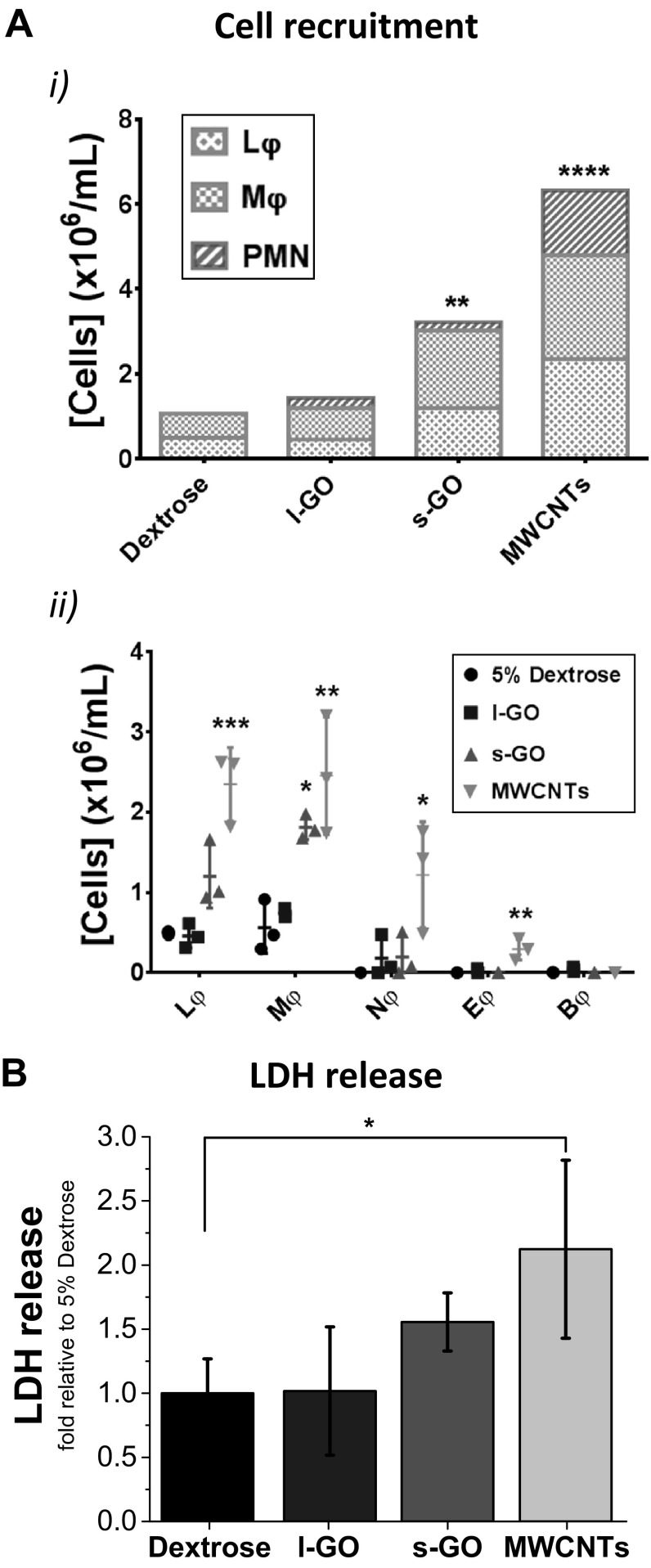Fig. 5.
Inflammatory response in the peritoneal cavity 1 day after injection of GO sheets dispersed in 5% dextrose. The peritoneal cavities of all exposed mice were lavaged with ×1 PBS. a Cells extracted from the peritoneal cavity were counted by Trypan Blue exclusion and stained with Kwik-Diff™. MWCNTs and s-GO elicited significant recruitment of immune cells to the peritoneal cavity (ai). Increased cell recruitment induced by s-GO could be explained by the increased population of monocytic cells (Mφ), including monocytes and macrophages (aii). Although all carbon nanomaterials induced recruitment of polymorphonuclear (PMN) cells, only MWCNTs elicited significant recruitment of neutrophils (Nφ) and eosinophils (Eφ). Basophils (Bφ) could also be identified, but to a much lower extent. In a similar trend to Mφ, the population of lymphocytes (Lφ) was increased for s-GO and MWCNTs, although statistical significance was only observed for the latter. b Both GO materials failed to induce significant release of LDH to the peritoneal lavage fluid. Total cell recruitment was compared in ai, with the mean value of each cell type plotted in a stacked bar chart. Data in (aii) are represented by individual points corresponding to each animal (n = 3), alongside mean ± SD. One-way ANOVA with post hoc Dunnett’s multiple comparisons test against the vehicle control was performed: *p < 0.05; **p < 0.01; ***p < 0.001; ****p < 0.0001. Data in b represent the mean of three animals ± SD. One-way ANOVA with post hoc Dunnett’s multiple comparisons test against the vehicle control was performed: *p < 0.05. Both GO materials were dispersed in 5% dextrose solution, whereas long MWCNTs were dispersed in 0.5% BSA solution

